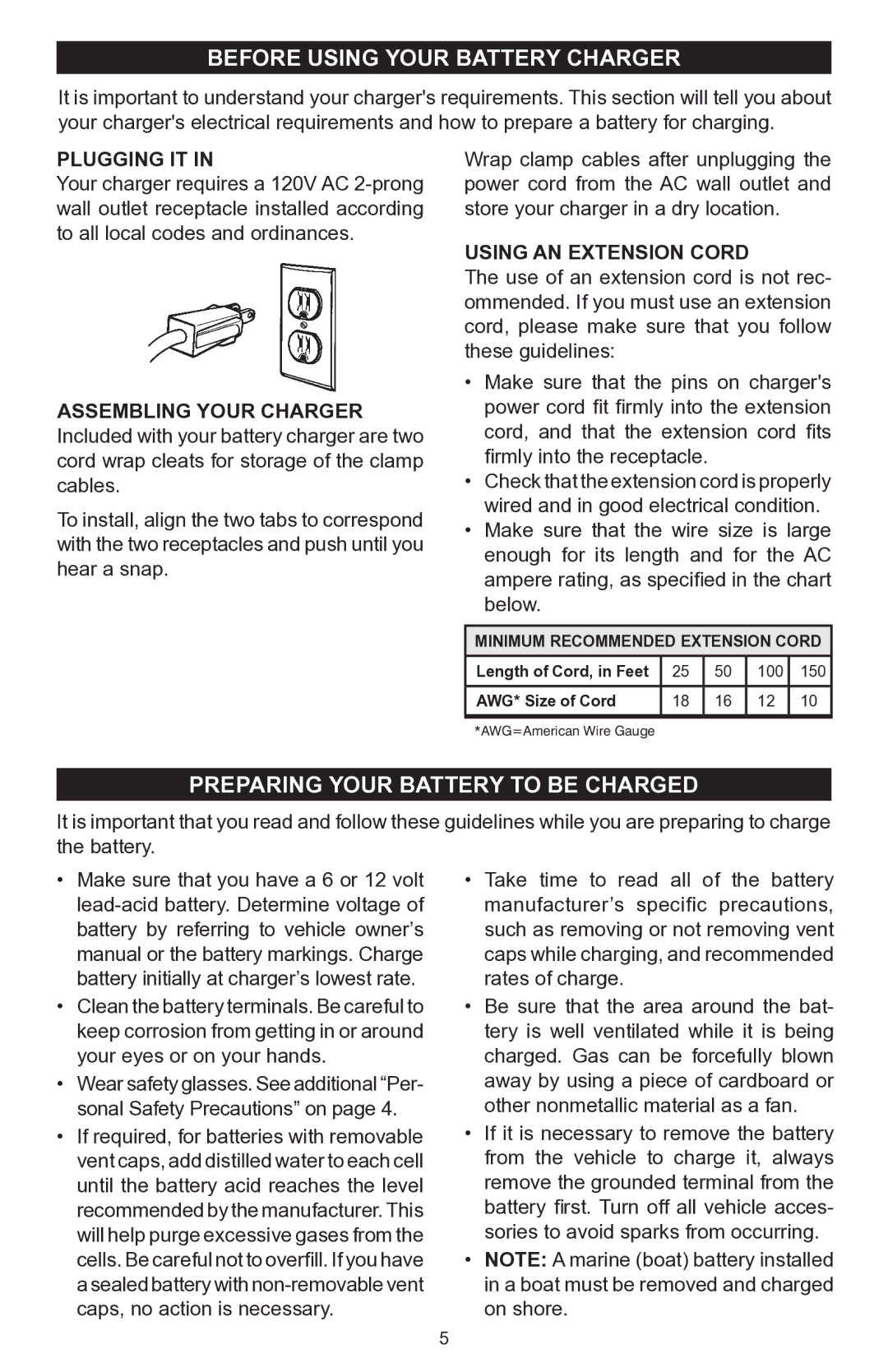
BEFORE USING YOUR BATTERY CHARGER
It is important to understand your charger's requirements. This section will tell you about your charger's electrical requirements and how to prepare a battery for charging.
PLUGGING IT IN
Your charger requires a 120V AC
ASSEMBLING YOUR CHARGER Included with your battery charger are two cord wrap cleats for storage of the clamp cables.
To install, align the two tabs to correspond with the two receptacles and push until you hear a snap.
Wrap clamp cables after unplugging the power cord from the AC wall outlet and store your charger in a dry location.
Using an extension cord
The use of an extension cord is not rec- ommended. If you must use an extension cord, please make sure that you follow these guidelines:
•Make sure that the pins on charger's power cord fit firmly into the extension cord, and that the extension cord fits firmly into the receptacle.
•Check that the extension cord is properly wired and in good electrical condition.
•Make sure that the wire size is large enough for its length and for the AC ampere rating, as specified in the chart below.
MINIMUM RECOMMENDED EXTENSION CORD
Length of Cord, in Feet | 25 | 50 | 100 | 150 |
AWG* Size of Cord | 18 | 16 | 12 | 10 |
*AWG=American Wire Gauge
Preparing your battery to be charged
It is important that you read and follow these guidelines while you are preparing to charge the battery.
•Make sure that you have a 6 or 12 volt
•Clean the battery terminals. Be careful to keep corrosion from getting in or around your eyes or on your hands.
•Wear safety glasses. See additional “Per- sonal Safety Precautions” on page 4.
•If required, for batteries with removable vent caps, add distilled water to each cell until the battery acid reaches the level recommended by the manufacturer. This will help purge excessive gases from the cells. Be careful not to overfill. If you have a sealed battery with
•Take time to read all of the battery manufacturer’s specific precautions, such as removing or not removing vent caps while charging, and recommended rates of charge.
•Be sure that the area around the bat- tery is well ventilated while it is being charged. Gas can be forcefully blown away by using a piece of cardboard or other nonmetallic material as a fan.
•If it is necessary to remove the battery from the vehicle to charge it, always remove the grounded terminal from the battery first. Turn off all vehicle acces- sories to avoid sparks from occurring.
•NOTE: A marine (boat) battery installed in a boat must be removed and charged on shore.
